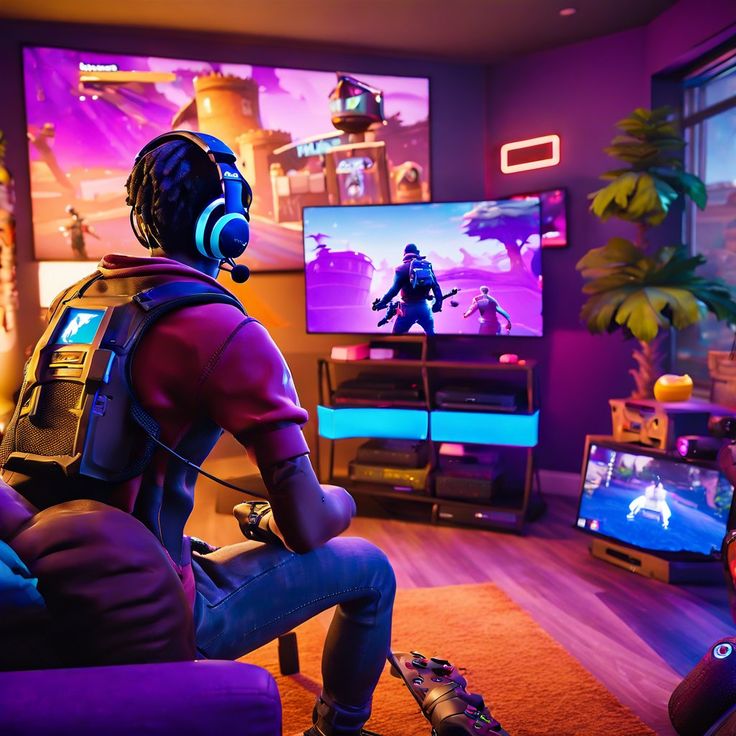The gaming industry has always been at the forefront of technological innovation, from the early days of pixelated arcade games to today’s lifelike simulations and expansive open worlds. As technology advances at breakneck speed, the future of gaming promises to be even more revolutionary. Here’s a look at the trends and innovations shaping the next era of gaming.
1. Cloud Gaming: The Netflix of Games
Cloud gaming has already begun to redefine how we access and play games. Platforms like NVIDIA GeForce Now, Xbox Cloud Gaming, and PlayStation Now are leading the charge, allowing gamers to stream high-quality games directly to their devices without needing powerful hardware.
What’s next?
Expect improvements in latency, broader adoption of 5G, and greater accessibility, making gaming seamless across all devices. Subscription-based gaming could become as ubiquitous as streaming services like Netflix and Spotify.
2. Virtual Reality (VR) and Augmented Reality (AR)
VR and AR continue to break boundaries in gaming by offering experiences. Games like Beat Saber and Pokémon GO have shown the potential of these technologies, but the future holds even more exciting possibilities.
What’s next?
- Wireless VR: With headsets like the Meta Quest Pro leading the way, VR will become more accessible and portable.
- Enhanced Interaction: Haptic feedback suits and advanced motion tracking will make the virtual experience feel more real.
- AR Integration: AR glasses could bring gaming into the real world, overlaying characters and environments onto your surroundings.
3. Artificial Intelligence (AI) in Gaming
AI has always been a part of gaming, but its role is evolving beyond enemy behaviors and difficulty adjustments. Developers are now using AI to create dynamic and adaptive game worlds.
What’s next?
- Procedural Generation: AI can generate entire game environments, quests, and NPCs, creating unique experiences for every player.
- Smarter NPCs: Non-playable characters will become more realistic, responding intelligently to player actions and emotions.
- AI-Powered Development: Game creation tools using AI will streamline workflows, enabling smaller teams to build expansive, high-quality games.
4. Graphics and Performance Enhancements
With the introduction of technologies like ray tracing, 4K gaming, and next-gen consoles like the PlayStation 5 and Xbox Series X, the visual quality of games has reached new heights.
What’s next?
- 8K Gaming: As display technology improves, 8K gaming will become the norm, offering unparalleled clarity and detail.
- Photorealism: Games will continue to blur the line between reality and fiction, thanks to advancements in rendering techniques.
- Optimized Hardware: GPUs and CPUs will become more efficient, enabling stunning visuals with lower power consumption.
5. The Rise of the Metaverse
The concept of the metaverse, a shared virtual space where users can interact, is gaining traction. Gaming platforms like Roblox and Fortnite are already exploring this idea, hosting virtual concerts and events.
What’s next?
- Fully Integrated Worlds: Players will be able to move seamlessly between games, social spaces, and real-world applications.
- Cross-Platform Connectivity: Expect a unified gaming ecosystem where players from various devices can interact in shared virtual environments.
- Economic Opportunities: Virtual goods, NFTs, and in-game economies will flourish, allowing players to earn real-world income through gaming.
6. Biometric Gaming
Imagine a game that adjusts its difficulty or storyline based on your emotions or physical state. Biometric technology is making this a reality by using sensors to track heart rate, facial expressions, and even brainwaves.
What’s next?
- Emotion-Driven Gameplay: Games could respond to stress or excitement, tailoring experiences to keep players engaged.
- Health Integration: Gaming could merge with wellness, using biometrics to encourage healthy habits or manage stress.
7. Sustainable Gaming Technology
As concerns about the environment grow, the gaming industry is adopting greener practices. From energy-efficient consoles to sustainable packaging, the focus is shifting toward reducing the carbon footprint of gaming.
What’s next?
- Eco-Friendly Hardware: Consoles and PCs will be designed with recyclable materials and lower power consumption.
- Cloud Efficiency: Cloud gaming platforms will implement renewable energy solutions to power their data centers.

